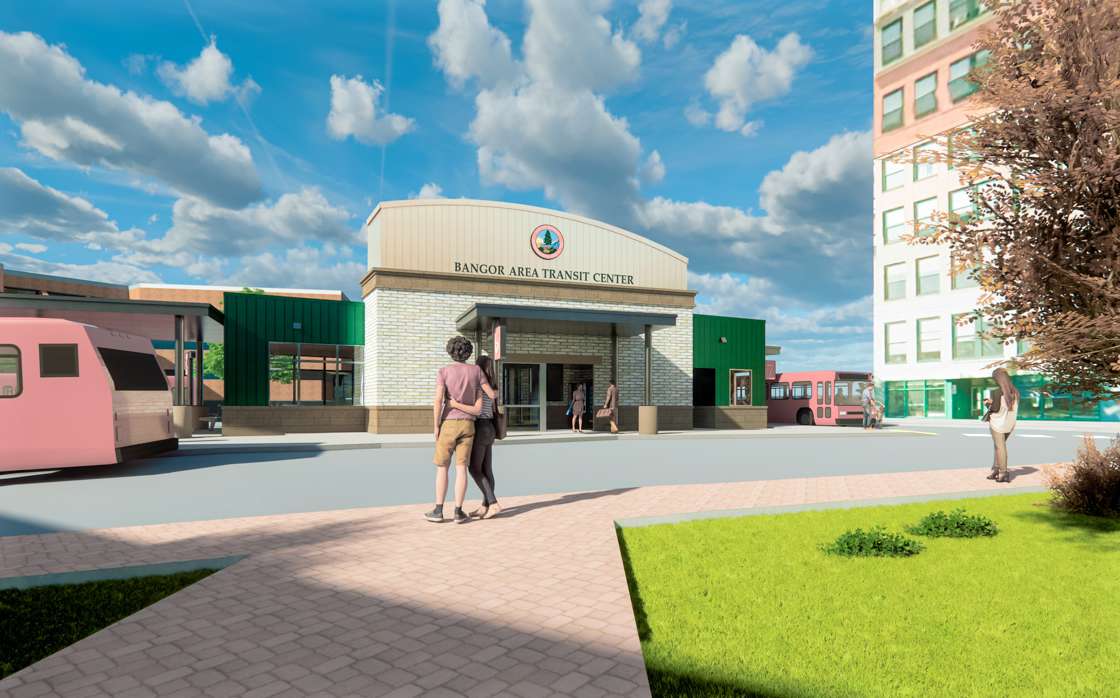
Bangor’s transit transition: New depot aims to put transit on the map as transport of choice
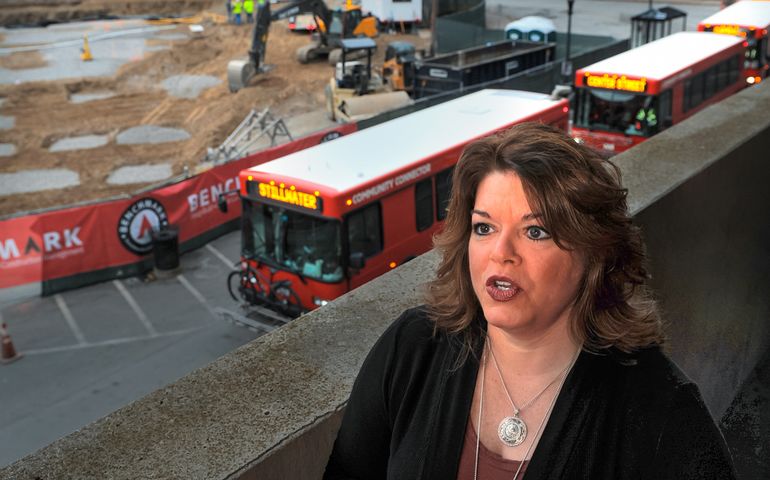 Photo / Fred Field
Laurie Linscott, bus superintendent for Bangor’s Community Connector transit system, says the new Bangor Area Transit Center is important not only for the city but also regionally.
Photo / Fred Field
Laurie Linscott, bus superintendent for Bangor’s Community Connector transit system, says the new Bangor Area Transit Center is important not only for the city but also regionally.
College students and professors. Parents taking children to day care and then heading to work. Shoppers needing to get to the store. Patients on their way to doctors.
Demand for public transit in Bangor serves many demographics. And downtown Pickering Square is the transit hub for many traveling throughout Bangor and surrounding areas to get to work, school, hospitals, department stores and more.
“We have college students who go to the University of Maine and Husson who take the bus,” says Laurie Linscott, bus superintendent for the transit system, which is called the Community Connector. “We have professors who take the bus. We have moms who take their child to daycare before going to work. I know a passenger who takes the bus to see her husband at the veterans’ home.”
The system hits the region’s many higher education institutions, health care sites and big-box stores on the city’s outskirts.
“People use the bus for everything,” she says. “In public transit, it doesn’t matter where you’re going and why you’re going. It just matters that you have the ability to get there.”
Now Pickering Square is undergoing a transformation to make the experience, both for passengers and for drivers, even more accessible. Construction is underway on a new bus depot. The goal is to better define pedestrian, public transportation and private vehicle flow; add amenities like EV chargers and bike storage spaces; and create better connections between the downtown and the waterfront.
Permanent home
“It will bring a nice facility to the downtown and put buses in a permanent home,” says Linscott. “We’ll have taxi spots and bike parking. And we want to invite other types and modes of transportation to use the center as well.”
Improved public transit is essential for Bangor, says Tanya Emery, the city’s director of community and economic development.
“We see, from both the placemaking and economic development perspectives, that transportation is a key component of a vital community,” she says.

A robust fleet with a modernized transit center that’s user-friendly is part of that vision. That’s true for younger generations, too, Emery notes.
“Younger generations want this as an available option, not just those who don’t have a car, but those who want to minimize their carbon footprint and want to be more thoughtful about the resources they’re using,” she says.
Public transit also ties in with the successful operation of local business, notes Deb Neuman, president and CEO of the Bangor Region Chamber of Commerce.
“When we talk about workforce challenges and businesses struggling to find employees, one of the areas that is often mentioned is access to transportation as a barrier to employment for many,” Neuman says. “We support efforts that focus on expanding transportation options whether it be at the local level and statewide. This project will no doubt create more opportunities and access to transportation that will ultimately benefit employers and employees and help boost the region’s economy.”
Regional importance
The new Bangor Area Transit Center will be a one-story building and canopy with amenities designed to improve passenger experience.
The 2,200-square-foot center and associated site work are located on a public site that was otherwise unused.
The new facility will incorporate Americans With Disabilities Act accessible elements that will enhance usability and mobility to all users. Amenities will include heat and air conditioning, an enclosed waiting area, outside shelters and interactive schedule information kiosks, public restrooms, a bus operators’ break room and private restroom and administrative space.
The exterior will include covered waiting areas, outdoor seating, lighting, and accessible passenger loading areas.
Construction began in September. Benchmark Construction in Westbrook is the general contractor. Artifex Architects & Engineers of Bangor was the designer.
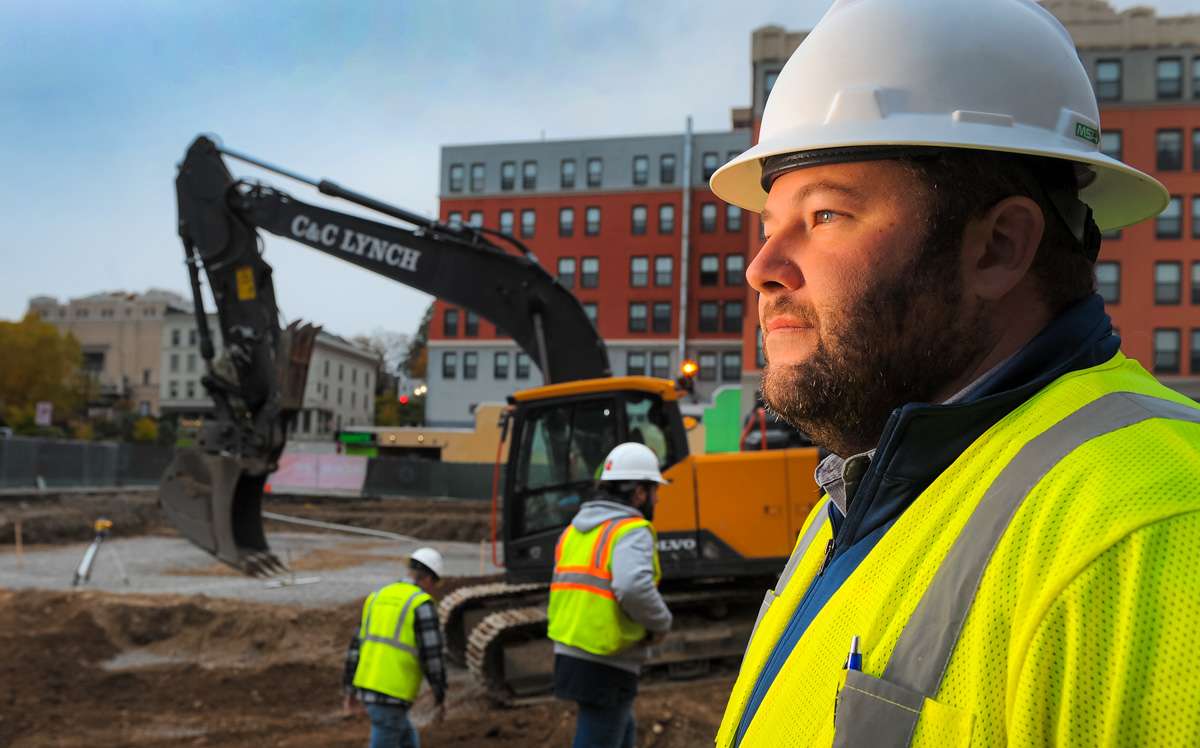
Completion is expected by December 2022, about six months longer than initially expected because of shortages of materials and labor, says John Theriault, Bangor’s city engineer.
Those factors also contributed to a higher price tag. Originally estimated at $1.6 million, the final cost is expected to be more than double that, at $3.5 million. Funding is provided through grants from the Federal Transit Administration and the Maine Department of Transportation with the city of Bangor and local Community Connector partners providing a 20% match.
“It’s an important project for the city of Bangor but also regionally,” says Theriault. “The system services Brewer, Veazie, Old Town, Orono and Hampden. It’s not just a Bangor project.”
Replacing a perilous setup
The project comes on the heels of improvements to the city’s neighboring parking garage.
Up until a couple of years ago, the first floor of the garage had a waiting area and bathrooms that served as the Community Connector depot.
The garage, built in 1988, had a primary entrance that was used by buses, cars and pedestrians. The setup created a perilous layout for pedestrians and passengers as they made their way around buses and cars.
The city moved the primary car entrance to create better flow, moved bus operations across the street to Pickering Square and installed bus shelters.
During the coldest weather, because passengers no longer had a heated waiting area, the city had a bus at the square that served as an ad-hoc warming center.
“The reason some of this was started was that the facilities in the original parking garage were small and insufficient to accommodate the people who were riding the bus,” says Theriault, who adds, “It was old and dingy.”
Secure and user-friendly
The Community Connector started in the late 1960s with school busing and then airport shuttles. A fixed-route system was set up around 1970.
Today, the fleet has 22 buses, four vans and two trolleys. The buses are used for fixed routes. The vans comprise the ADA Paratransit system, a shared-ride curb-to-curb service for individuals with disabilities who are unable to use the fixed route system. The trolleys are used for community festivities and can be rented for private activities.
In typical years, bus ridership is over 1 million. It was about half that number in 2020 and this year is projected to be between 700,000 and 800,000 passengers, or about 2,400 per day, says Linscott.
The system operates 307 days a year. Buses traveled 690,487 miles in FY 2020.
There are 30 drivers, but the system could use 39. There are four administrative staffers, with three additional open positions.
In addition to drivers, Linscott says the system is looking for a dispatcher and a safety-and-training officer.
Linscott, who has worked for the agency for 22 years and was instrumental in getting plans and funding for the new transit center off the ground, says the goal was to create a sustainable facility that would be secure and user-friendly.
“People need to get where they need to go and we’re the only business in town that can do that,” she says.
The project was a long time coming.
“The city’s known for a long time that the transit center we had prior to this project was substandard and wasn’t putting transit on the map as a mode of transport of choice,” says Emery. “We wanted to make it a better experience for everybody.”
Downtown destination
The project ties in with other development projects designed to enhance the downtown as a destination and an attractive place to live and work. In addition to the parking garage alterations, there have been improvements to Merchants Plaza, a popular public space that bridges from West Market Square to Pickering Square.
Downtown Bangor Partnership, a nonprofit organization that promotes the downtown economy, has been responsible for beautification initiatives as well as marketing, events and outreach projects such as creating welcome baskets for new businesses.
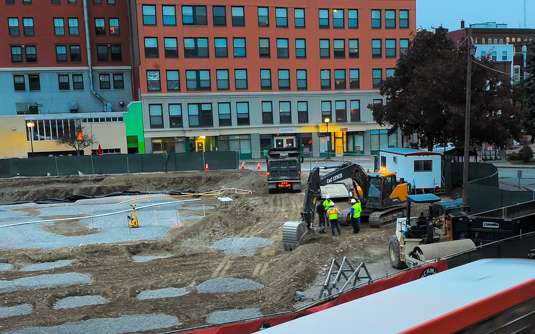
“Everybody has come together in the downtown to add elements like plantings,” says Emery. “We’ve done outdoors seating parklets. We’ve had a lot of restaurants and retailers who spruced up their building facades with our facade grant program. It really has refreshed the look of the downtown.”
Small things, like installing throughout the downtown LED lighting that can change colors with the holidays, provide a festive air at little expense, she notes.
“They’re small things with not a ton of capital investment, while we work on those large capital investments like the transit center,” says Emery. “And people are telling us they love this authentic New England downtown with buildings that are vibrant and full of life.”
Those efforts are attracting attention from developers.
“We have seen an increase in recent years in the number of residential units downtown,” says Emery. “We’ve seen significant conversions of office space to residential in the last five years particularly.”
That includes projects like Heather and Abe Furth’s renovation of a 14,000-square-foot building at 29 Franklin St. into upper-story apartments and ground-floor commercial, Vance Aloupis’s conversion of Bangor Savings Bank’s former headquarters at 99 Franklin St. into luxury apartment complex Tower 99, and Roy Hubbard’s conversion of the former Dakin Building at 28 Broad St. into luxury apartment building 28 Broad Street Lofts.
The residential units are filling up.
“We have this mix of great public spaces and great businesses downtown,” says Emery. “People are voting with their dollars and signing leases.”
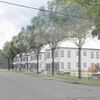

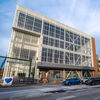


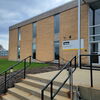
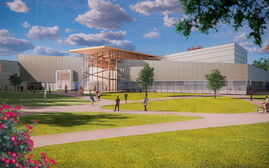







0 Comments